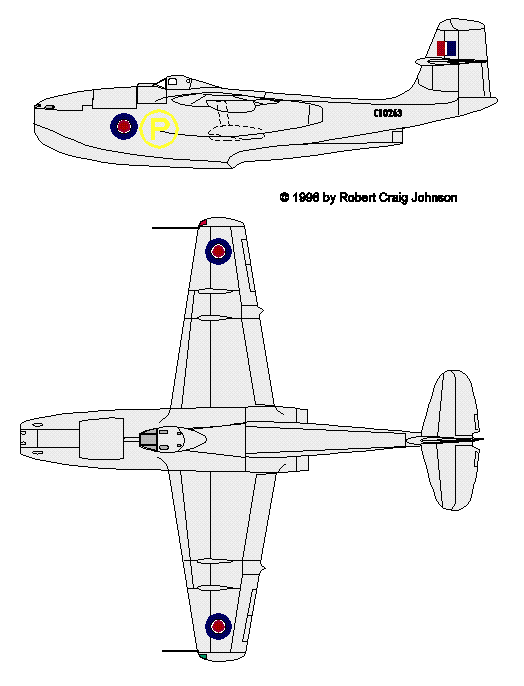
The SR 177 covered in our last issue was not the first jet fighter from the Saunders-Roe firm. In 1944, this Cowes-based manufacturer of patrol seaplanes received a contract for three prototypes of their tender to the E.6/44 specification, the extraordinary SR.A/1. The year before, as the Western Allies began to contemplate offensive operations in the Pacific, they came face to face with a problem that had bothered the Japanese a few years earlier. Airfields were few and far between in the Pacific, and carriers were always in relatively short supply. Usable airstrips would generally be in Japanese hands and would be defended resolutely. Conventional land-based airpower could thus be had only at a high cost in lives and materiel. Like the Japanese, the British thought that a seaplane fighter might be very useful under these conditions. A latter-day Rufe or Rex could turn any moderately sheltered anchorage into a forward air base. Such fighters had always suffered a performance penalty vis-à-vis land-based warplanes, of course. The weight and drag of the flotation system made this inevitable. But, by 1943, turbojets were available. With no propellers to worry about, the designer could adopt a shallow, low-drag flying boat hull rather than the ungainly pontoons and struts of a conventional fighter seaplane. Takeoff runs from a watery runway could be as long as they had to be, so range and all around performance might well equal or exceed the best figures for land- or carrier-based aircraft.

Such was the theory. The SR.A/1 did not fly until July of 1947, however. Engine development took longer than expected, and the massive American carrier buildup of 1944 and 1945 removed any need for fighter seaplanes. While the threat of Soviet nuclear attack made the SARO airplane’s independence of runways attractive, the program was not pursued with any great urgency.
The airplane emerged as a fairly conventional aircraft powered by two Metropolitan-Vickers Beryl turbojets. The engines drew their air from a high-mounted nose intake and exhausted on either side of the hull aft of the wing. Wing-mounted stabilizer floats retracted into streamlined blisters at mid span. Armament consisted of four 20-mm cannon mounted in the upper nose. Performance was very good. The SR.A/1 could reach a maximum speed of 512 mph and could climb at 5800 ft/min. Endurance at normal loaded weight was 2.4 hours.
While the outbreak of the Korean War provoked a brief renewal of interest in the SR.A/1, it was never seriously considered for production once the Second World War was over. It was a specialized type vying for scarce funds at a time of fiscal crisis and shrinking defence budgets. Britain spent its money on conventional, known entitities—Meteors, Vampires, Hunters, and aircraft carriers. The last SR.A/1 was mothballed for good in the summer of 1951.
Note for the modeler: There was at one time a vacuform kit of the SARO SR.A/1 in 1/72-scale—possibly a RarePlanes offering.
© 1996 by Robert Craig Johnson. Part of a series first published in Eagle Droppings, the Newsletter of the Rocky Mountain Chapter, IPMS/USA.